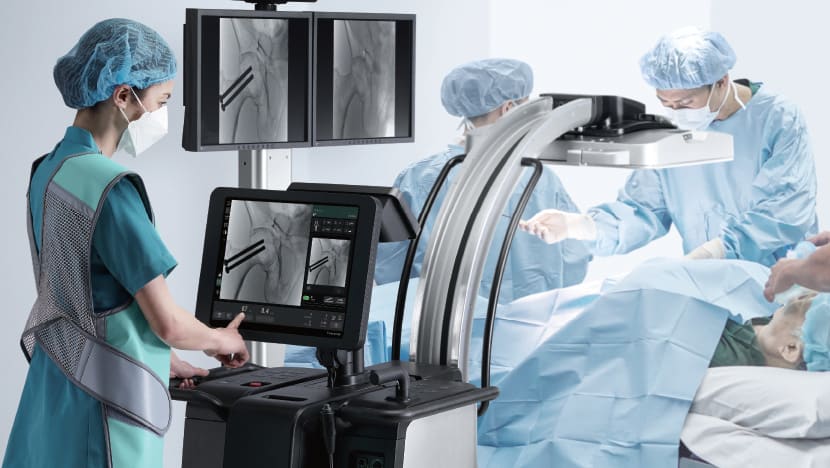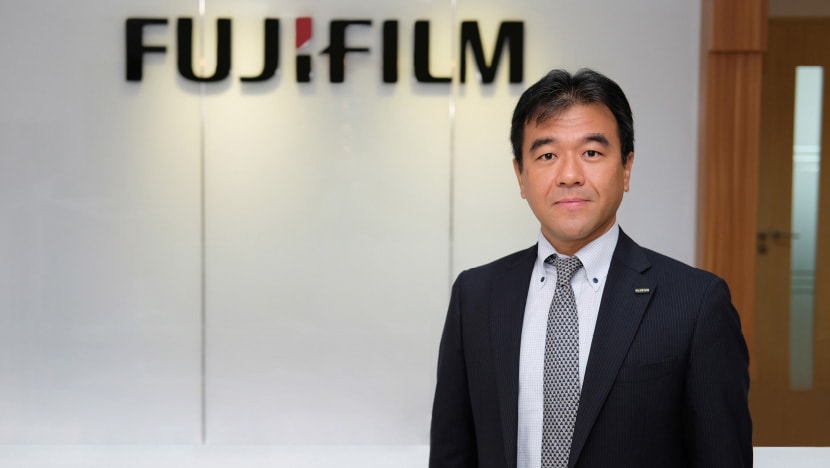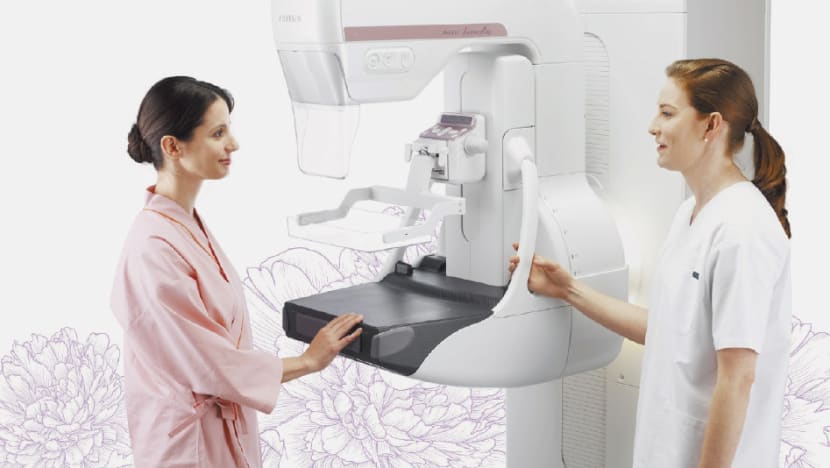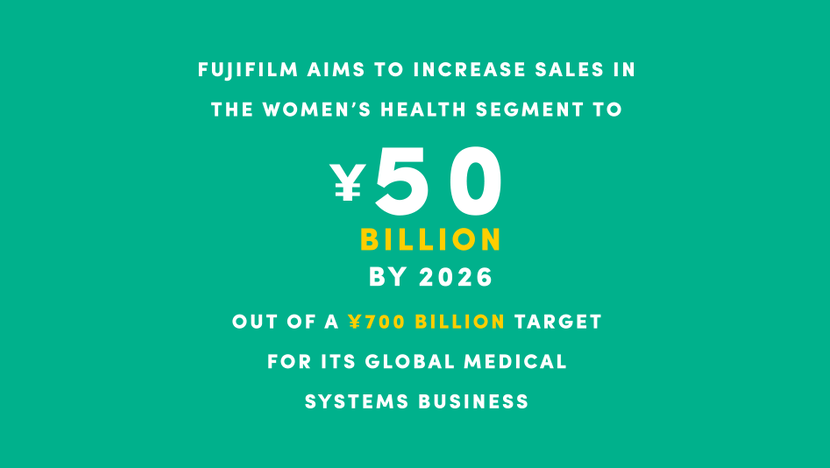If an X-ray is needed, most of us would head to the nearest clinic or hospital by car, bus or train. But for residents of Quang Nam province, Vietnam, the X-ray facility came to them instead – by motorcycle and boat.
Certain districts in the area – such as Quang Nam – have hilly terrain and narrow local roads that are impassable to the X-ray vans used by some mobile clinics.
Fujifilm manufactures the X-air, a portable digital X-ray device that can be transported on motorcycles to provide chest X-rays to residents staying at remote areas.

The radiologists also sailed to Cu Lao Cham, a cluster of islands in Quang Nam, to provide proactive tuberculosis (TB) screening services to the 2,000 people living in the fishing village. These residents suffered from a TB rate higher than the national average, due in part to the lack of X-ray facilities and the resulting inability to detect the disease in its early stages.
Improving accessibility to medical services is part of Fujifilm’s mission, as laid out in its Sustainable Value Plan 2030.
“We believe that access to quality healthcare is a basic right for every human being,” said Mr Teiichi Goto, president, representative director and chief executive officer of FUJIFILM Holdings Corporation. “For communities residing in remote areas, we partner with the local government and non-governmental organisations to bring healthcare right to their doorstep.”
FUJIFILM Healthcare Asia Pacific believes that access to quality healthcare is a basic human right. From high-resolution magnetic resonance imaging systems, to portable X-ray machines, the firm is focused not just on advancing medical imaging technology, it aims to improve access to such tech so that people around the world can enjoy an improved quality of life.
A HEALTHCARE-DRIVEN TRANSFORMATION
Many photography enthusiasts are familiar with Fujifilm, which was founded in 1934 as a photographic film manufacturer in Japan. But few might be aware that only two years later, Fujifilm was already producing X-ray films for the healthcare industry.
In 1981, Fujifilm developed the world’s first digital method for diagnostic X-ray imaging using a special photosensitive plate. This technology led to the creation of Fuji Computed Radiography in 1983.
When the rise of digital photography caused the market for colour photographic film to shrink rapidly in the early 2000s, Fujifilm was already prepared to pivot. This was thanks to its earlier commitment to medical imaging and technology as well as its identification of healthcare as a potentially promising area for future growth.

IS A BASIC RIGHT FOR EVERY HUMAN BEING."
Drawing on the technological strengths acquired from its photographic film business and driven by a desire to address people’s health such as improving accessibility to medical imaging services, Fujifilm has since grown its healthcare business.
According to Mr Noriyuki Kawakubo, the managing director of FUJIFILM Healthcare Asia Pacific, the global revenue for Fujifilm ’s medical systems business was ¥533.8 billion (S$5.3 billion) for the fiscal year ending March 2022 – a strong performance compared to its revenue the previous year of ¥349 billion. Its entire healthcare segment – worth ¥801.7 billion – was responsible for the largest slice of global group-wide revenue, at 32 per cent.
By the end of the fiscal year ending in March 2027, Fujifilm aims to achieve a sales target of ¥700 billion for its medical systems business, as part of its greater target of ¥1 trillion for its healthcare segment as a whole.

While the business environment today is very different from that of 1934, the company’s dedication to innovating world-class solutions in all its businesses has never wavered.
“Fujifilm is not just a photographic company, but a truly diversified company offering healthcare products and services,” said Mr Kawakubo. “We continue to build the same level or even higher trust for our healthcare products and make Fujifilm a brand of choice for consumers and healthcare professionals alike.”
TECHNOLOGY THAT ENHANCES HEALTHCARE
In 2019, Fujifilm created an AI technology brand called REiLI. It is a vendor-neutral open AI platform to create a new type of diagnostic imaging workflow which can host third-party AI technologies as well as Fujifilm’s own AI technologies.
Since then, Fujifilm has provided products and services that utilise AI technology in over 80 countries.
“Fujifilm ’s long-standing experience in medical imaging also allowed us to develop ELUXEO, which fulfils the need for enhanced visualisation in endoscopies with its 4 LED Multi-Light technology,” Mr Kawakubo said. “Together with our CAD EYE software – powered by REiLI – we are able to support real-time detection of colonic polyps during colonoscopies, by delivering image clarity and visualisation in high definition.”

As early detection and treatment are key to survival for most diseases, Fujifilm aims to bring this cutting-edge technology to underserved areas.
“In emerging communities, we collaborate with healthcare providers to advocate regular screening,” explained Mr Goto. “For example, in India – where health screening services are not popularised compared to Japan or Singapore – Fujifilm opened its first health screening centre, NURA, in Bengaluru in 2021.”
NURA utilises Fujifilm ’s medical devices and AI-powered medical IT systems to support doctors carrying out screenings and tests for cancer and other lifestyle-related diseases.
“In the future, we plan to open more health screening centres in emerging countries,” said Mr Goto, adding: “The need for quality healthcare is universal. As a healthcare company, Fujifilm will continue to identify the barriers and provide innovative solutions towards resolving the needs of the society.”
A FUTURE OF IMPROVED ACCESSIBILITY
Fujifilm plans to grow its presence in the medical imaging sector to make healthcare accessible to as many people as possible.
Its recent memorandum of understanding with Parkway Radiology will provide mobile mammography services to more women in Singapore in 2023. An electric bus equipped with Fujifilm’s AI-enabled digital mammography facilities will make its rounds in selected residential areas and business districts where female executives and busy mothers can undergo a 15-minute screening conducted by radiologists from Parkway Radiology.

Women’s health is a key area of interest for Fujifilm where it offers competitive products in the area of breast imaging, including mammography and ultrasound.
Fujifilm aims to double sales in this area of women’s health by achieving ¥50 billion out of the existing Medical Systems sales target of ¥700 billion by FY2026 by expanding the scope of synergies offered by FUJIFILM Healthcare in the breast imaging area and also in a wider area of women’s health including examinations in obstetrics and gynecology, as well as bone density testing.
He cited Fujifilm’s recent addition of Computed Tomography (CT) and Magnetic Resonance Imaging (MRI) equipment as the key factor allowing the company to create a more comprehensive solution for women’s healthcare.


Fujifilm aims to create a comprehensive healthcare company that encompasses the three main aspects of health: Prevention, which includes cosmetics and supplements, Diagnosis, which covers its diagnostic imaging systems and medical IT, and Treatment, which involves the support of drug discovery and biopharmaceuticals production.
FUJIFILM Healthcare Asia Pacific offers a wide range of product line-up including X-ray diagnostic imaging systems, endoscopes, ultrasound technology and in-vitro diagnostics.
In the meantime, Fujifilm’s X-air is going to even more places, in the company’s quest to improve healthcare accessibility.

The World Health Organization – which collaborated with Fuifilm on the Stop TB Partnership – has listed the X-air as one of the recommended devices for TB screening, after new guidelines were announced in 2021 regarding the inclusion of chest X-rays in addition to conventional sputum tests for TB.
Besides Vietnam, the X-air has since been used in the Philippines and Myanmar in South East Asia.
“These partnerships are very important to Fujifilm, as they demonstrate our commitment to making better quality products through constant innovation,” said Mr Kawakubo.













